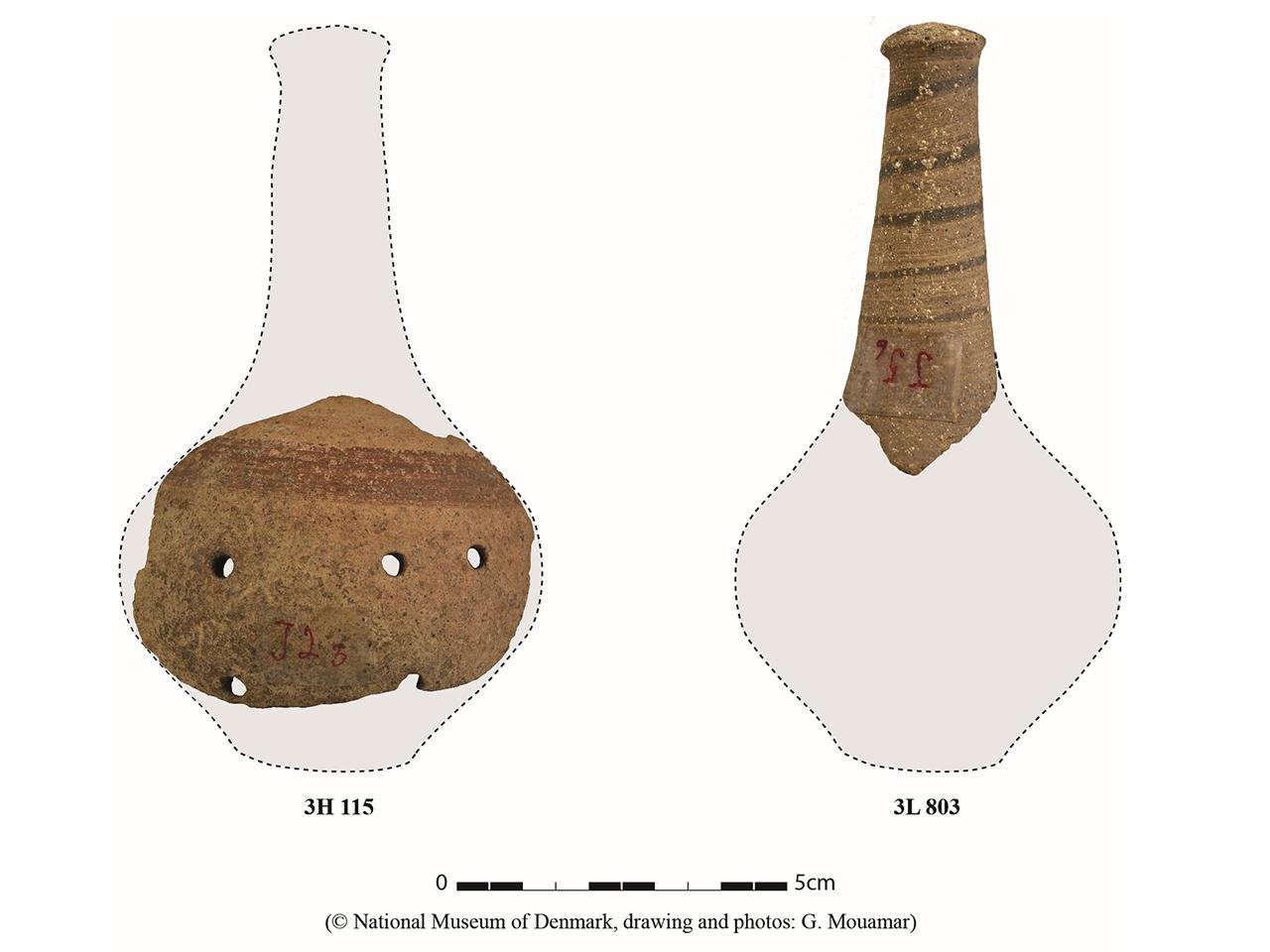In an incredible reexamination of nearly century-old archaeological discoveries, scientists have identified 4,500-year-old clay baby rattles in the ancient city of Hama in western Syria, which offer intimate glimpses into the everyday lives of families in the Early Bronze Age. The rattles, long misclassified as miscellaneous ceramic handles for decades, are now known to be part of the earliest known examples of commercial toys in the Near East.
 Reconstruction of the shape of the original rattles based on the pieces. Credit: National Museum of Denmark, drawing and pH๏τos: G Mouamar
Reconstruction of the shape of the original rattles based on the pieces. Credit: National Museum of Denmark, drawing and pH๏τos: G Mouamar
The study, published in the journal Childhood in the Past, was conducted by a team of researchers from the National Museum of Denmark, Archéorient CNRS in France, and the University of Milan. The study, led by Dr. Georges Mouamar, analyzed 19 rattle fragments excavated in the 1930s during Danish excavations under Professor Harald Ingholt. Despite over 90 years of being stored in a museum, the items are now known to be parts of hollow, maraca-shaped rattles that were once used to entertain infants.
Made from the same calcareous clay as other professionally produced ceramics at the site, the rattles were crafted by skilled potters who likely sold them in local markets together with other household vessels such as bowls and cups. Their small handles, fitting perfectly into a child’s hand, and the soft noise resulting from tiny pebbles or clay pieces inside, are evident proof that these were made for babies, not for ritual or musical use.
Mette Marie Hald, senior researcher at the National Museum of Denmark and co-author of the paper, emphasized the emotional significance that the find provides. “It shows us that parents in the past loved their children and invested in their well-being and their sensorimotor development, just as we do today. Perhaps parents also needed to distract their children now and then so that they could have a bit of peace and quiet to themselves.”
 Mette Marie Hald holds fragments of 4500-year-old baby rattles. Credit: John Fhær Engedal Nissen, the National Museum of Denmark
Mette Marie Hald holds fragments of 4500-year-old baby rattles. Credit: John Fhær Engedal Nissen, the National Museum of Denmark
The rattles, some of which were decorated with painted cross or band patterns, were found in the fill layers between building levels in a non-elite residential neighborhood and are therefore evidence of their widespread use among regular families. According to the study, some of them had flat bases for standing upright, while others showed stylistic variations that suggest their production lasted for several centuries, from as early as 2450 BCE to 2000 BCE.
What is significant about the find is its scale: it is the largest group of baby rattles ever found in the Near East. It represents a distinctive archaeological window into ancient children’s lives — a population that is often overlooked in excavations focused more on elite or ceremonial contexts.
 Mette Marie Hald with fragment of 4500-year-old baby rattle. Credit: Jacob Hald, the National Museum of Denmark
Mette Marie Hald with fragment of 4500-year-old baby rattle. Credit: Jacob Hald, the National Museum of Denmark
Some researchers suggest that the toys are symptomatic of broader societal changes, including urbanization and the rise of household economies. While cities grew and more adults began to work outside the home, the need for more affordable childcare items like rattles may have increased, potentially leaving older children to entertain infants.
Though some of the earliest rattles have indeed been found in burials, such as those dating from the Ubaid period in northern Mesopotamia in 5300 BCE, the Hama collection stands out for its scale and for its context: domestic, lived-in spaces of ordinary people. It is a poignant reminder that the instinct to soothe a fussy baby — and to please a child — is a timeless human experience.
“Perhaps a parent stopped at a market stand on their way home and bought a rattle as a present for their child,” Hald said. “This scenario is entirely recognizable to us today.”
More information: Mouamar, G., Lumsden, S., Vacca, A., & Hald, M. M. (2025). Infant care in early bronze age Syria: Newly identified clay rattles at Hama. Childhood in the Past, 1–18. doi:10.1080/17585716.2025.2489258





